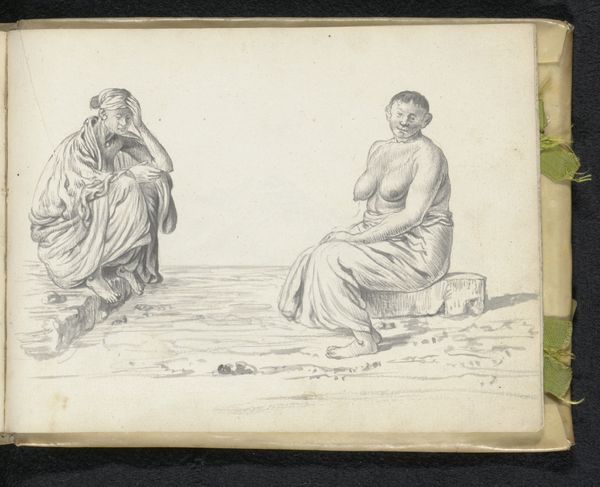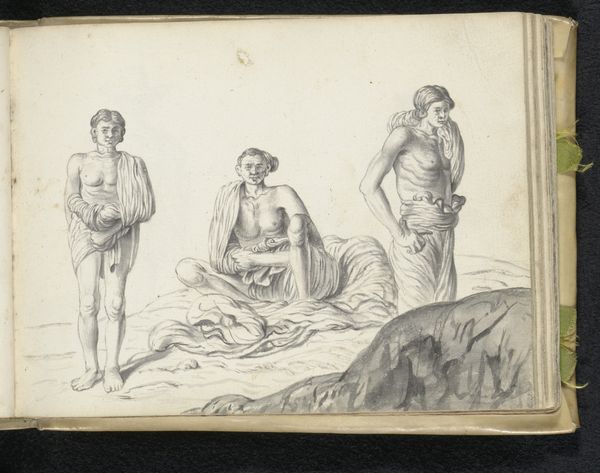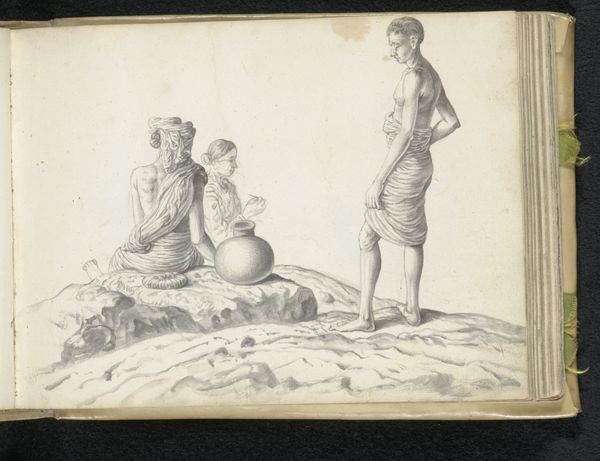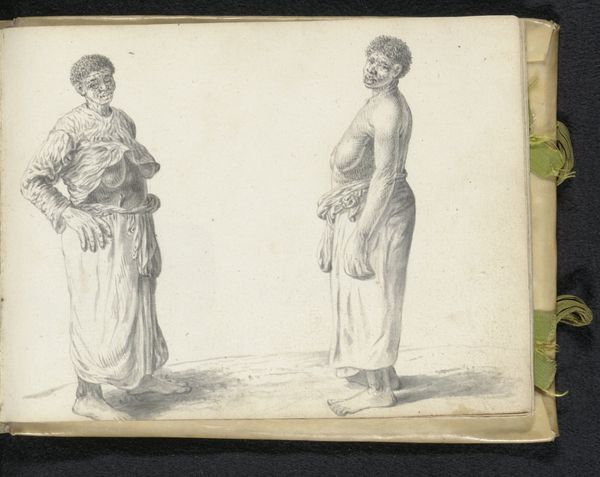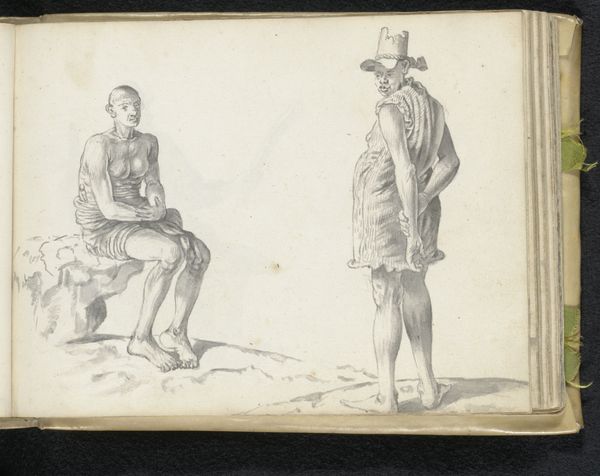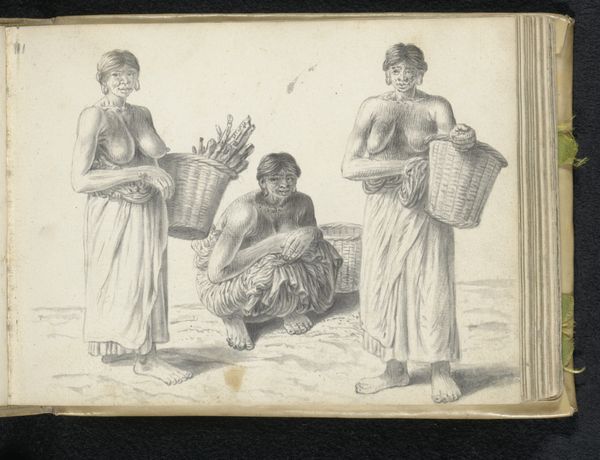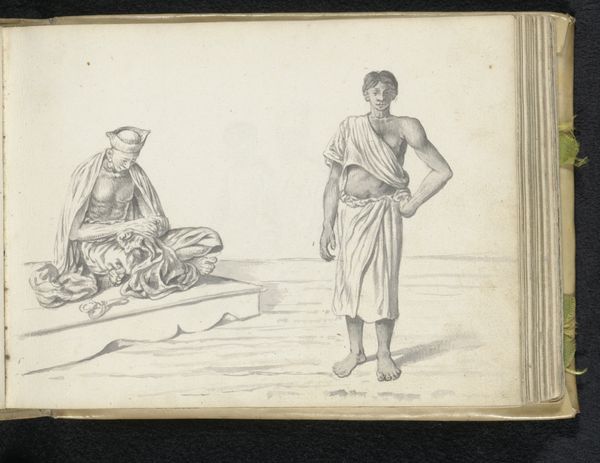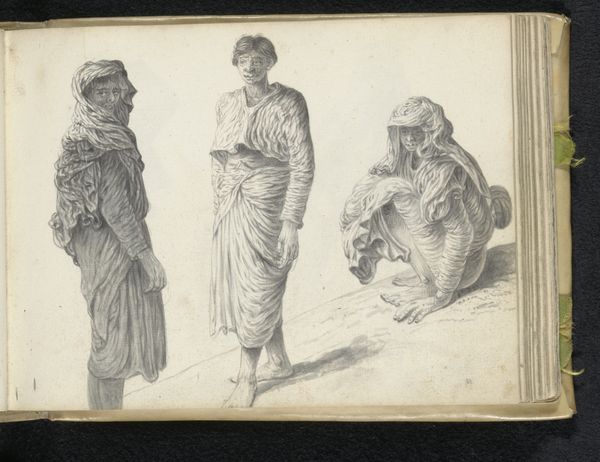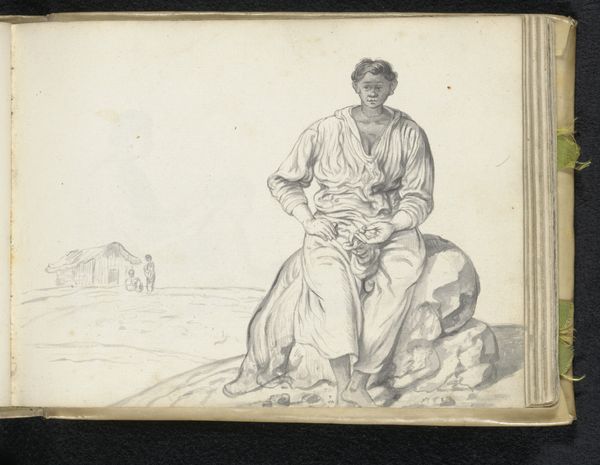
drawing, pencil
#
drawing
#
toned paper
#
light pencil work
#
quirky sketch
#
dutch-golden-age
#
sketch book
#
figuration
#
personal sketchbook
#
sketchwork
#
pen-ink sketch
#
pencil
#
sketchbook drawing
#
genre-painting
#
storyboard and sketchbook work
#
nude
#
sketchbook art
Dimensions: height 148 mm, width 196 mm
Copyright: Rijks Museum: Open Domain
Esaias Boursse made this drawing of two sitting laborers sometime in the mid-17th century. It presents us with an image of working-class life that is both intimate and slightly alienating. Consider the setting, likely the Dutch East Indies, given Boursse's biography. What does it mean to depict manual laborers in such a classical, almost allegorical style? The woman on the right, partially nude, recalls classical depictions of nymphs or goddesses, yet she is firmly grounded in her labor. Boursse seems to be playing with the visual codes of class and status. Is he elevating the working class, or exoticizing them for a European audience? To better understand the image, we could research the social and economic conditions in the Dutch East Indies at the time, the role of the Dutch East India Company, and the visual culture of the period. Art history helps us understand how images reflect and shape social realities.
Comments
No comments
Be the first to comment and join the conversation on the ultimate creative platform.
